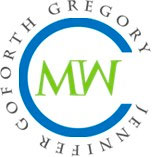Negotiation Strategy #2: Reduce the Scope
Note from Jennifer: Reminder that the trial offer from Ed Gandia for his Get Better Clients Academy (15 days full access for $9) expires at the end of this week. Several blog readers have signed up and told me that they were totally overwhelmed by the amount of useful information included. I highly recommend anyone who is looking to find better clients in 2018 sign up for the Academy trial offer.
I was recently talking to a potential client that I really wanted to work with. The company was growing. The marketing manager was smart and nice. And the topic was one that I could use to build my portfolio on a new tech topic. The client told me that they had plenty of work and wanted a long-term freelancer. The only sticking point was the money. They had a firm budget that was lower than I was willing to go. It was somewhat reasonable, but not enough for me to make my targeted hourly rate based on how long I thought the piece would take.
Instead of turning down the gig, I used a strategy that I highly recommend: I negotiated the scope by asking the client to make changes to the project that will result in it taking less time. This builds on the post I wrote the other day about paying attention to the hourly rate you are earning, which is the total project fee you are earning divided by the number of hours it takes you. When you reduce the amount of time an article takes you without reducing the amount you earn, then you increase your hourly rate. You now have extra time to either do more paying work or have more free time. (Guess which one I suggest.)
Reducing the scope can often turn a project that was initially low paying into one that makes financial sense. The reason it works is that often the budget it out of the content marketing manager’s control. So they have to go to someone else to increase the overall project fee – accounting, their boss, their boss’s boss. But the assigning editor is typically in control of the scope – how many interviews, how long, how much research. So they can usually easily changes these parameters, which in turn increases your hourly rate. And I have found that many potential clients are much more willing to negotiate scope than money.
A Real Life Example
They were asking me to do an 800-word article on a technical subject with three interviews for $400. Since I estimated it would take me 5 hours, this would be below my target hourly rate of $100. Yes, my hourly rate is usually higher for tech topics but for ongoing work, I will go to $100 an hour since the result is less unpaid marketing time. Plus my gut feel was that this client would be a client that would match well with my strengths and personality, thus likely turn into a long term client.
I asked if they could increase the rate to $500, but the marketing manager said that the rate was fixed and he could not increase it. So I asked if we could change the scope to include just one interview and web research instead of three interviews. I also explained that three interviews was a lot for that word count so that by using only one source, we could get a more in-depth thought leadership from that source. The client agreed and I went to work. The article ended up taking me three hours in total, which resulted in an hourly rate of $133. And I have done several more projects for the client in the last few months.
5 Steps to Negotiating Scope Reduction
The next time a client cannot increase their rate, try this approach:
- Figure out the hourly rate that you will earn based on how long it will take you at the current scope. Use this post on estimating time to help you. If possible, break out your estimate based on each component of the scope (or phase of the assignment).
- Play around with the time estimates to figure out what you can remove from the scope to make your hourly rate work out to at least $100 an hour (or whatever your target rate is).
- Explain to the client that the current scope doesn’t translate into a rate that makes sense for your business goals. Then explain the scope changes that would make the rate work for you.
- Add in a business reason that supports changing the scope. For example, will reducing the number of interviews make the article flow better or allow more in depth exploration.
- If the client is not willing to change the scope, be willing to walk away. This hard, but absolutely critical. I’m going to post next week about how to walk away.
Have you successfully negotiated the scope of a project to increase your hourly rate? Any tips you can share?



This one is gold, Jennifer.
Sometimes I get impatient with the relentless “raise-your-rates” drumbeat from freelancing experts because there are plenty of situations where a freelancer and a client are comfortable with a certain rate that might not be the most the freelancer could possibly get. The business relationship and the steady work outweigh the risks of squeezing every last penny out of the clients (which would motivate them to find someody cheaper).
And a lot of writers especially simply aren’t that caught up in seeing how much revenue they can rake in.
But your point about dialing back scope to get a better hourly relate reinforces a separate point that to my mind is much more important: This is a business based on how much you value your labor. Every business tries to earn as much cash as possible while keeping the customer happy.
Freelancing is no different. It’s a business where you need to turn a profit.
Keep these coming, they are a great service to your writing colleagues.